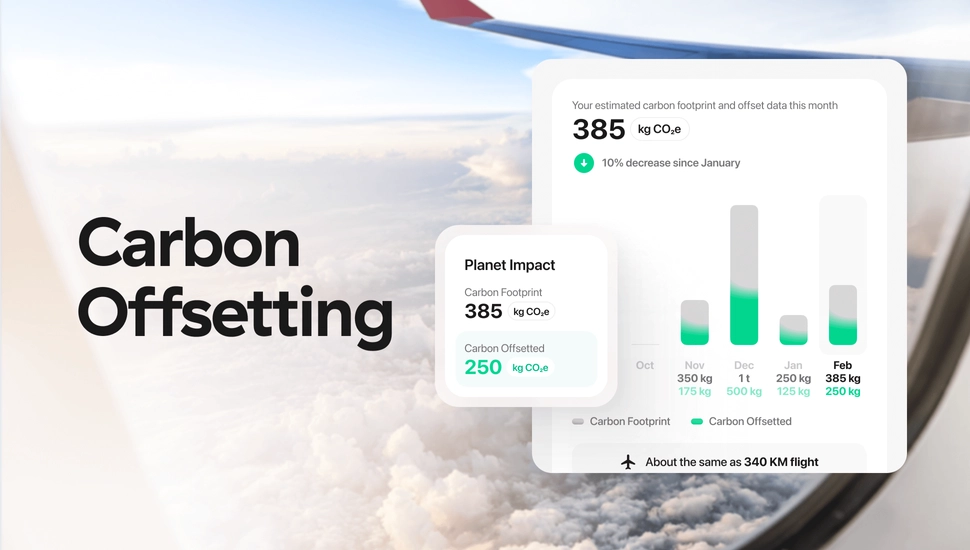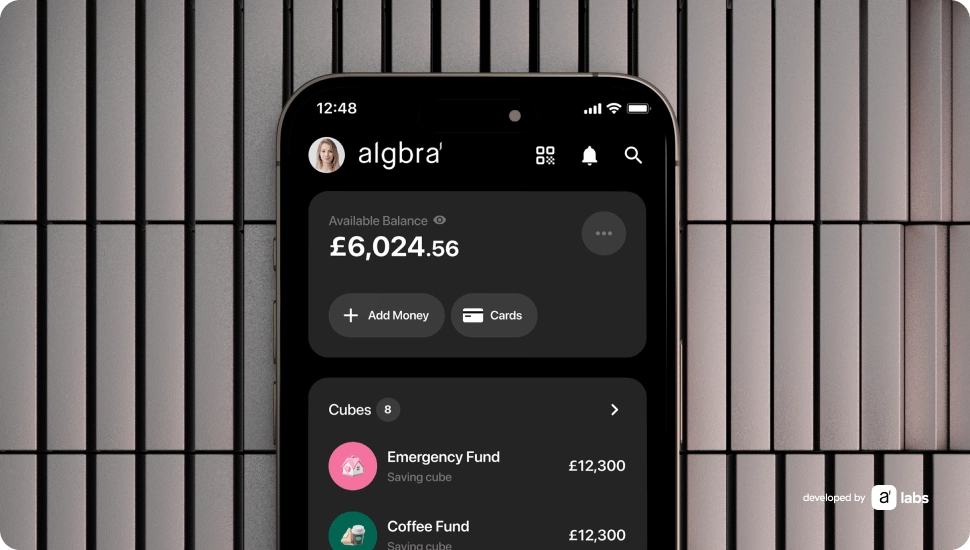Climate change and action is desperately needed. But with so much jargon flying around, it can be hard to know what things mean. Here’s a quick guide to carbon offsetting.
Human activity is heating the earth up. Quickly. While that might sound great for long, balmy summers, it’s less than ideal for fostering an inhabitable planet… In 2022, the UK recorded its hottest year ever. And, according to NASA brainboxes, the last nine years have been the warmest yet. We’re fast approaching the point of no return for climate action.
While it’s not the solution to the climate crisis, carbon offsetting could help get us back on track. But what is it, how does it work and how can it help in the fight against climate change?
Okay, what is carbon offsetting?
Carbon offsetting looks to avoid, reduce or remove the impact of carbon dioxide equivalent (CO2e) emissions you can’t avoid producing. How? Through verified environmental conservation, energy efficiency or renewable energy projects, like reforestation initiatives.
Imagine you have to fly for work. Unless you can sprout wings, you’re going to take a plane. And planes are notoriously bad for the environment – with aviation contributing about 4% of human-created global warming.
Your journey will create CO2e emissions – but you can buy a “carbon credit” to offset those somewhere else. So, in theory, your flight’s now carbon neutral. Possibly even carbon negative.
The types of carbon offsetting, explained
Essentially, carbon offsetting projects can be split into two categories:
- Avoidance projects
- Removal projects
And these can be subdivided into technology-based or nature-based approaches.
There’s a level of nuance to all this, so let’s break it down.
Avoidance projects
Avoidance offsets involve projects that, shockingly, avoid releasing GHGs.
Pretend you run a solar farm that doesn’t create any CO2e emissions. You can create a “carbon credit” to sell to another company that does release GHGs. It can use that credit to offset its emissions and become carbon neutral.
Isn’t that greenwashing?
No. And yes.
Avoidance projects can be tricky. Say your company avoids emitting 1,000 tonnes of GHGs, and sells a credit to a company that produces 1,000 tonnes of CO2e and is making no attempt to alter its practices. Then yep – greenwashing.
Ideally, avoidance projects shouldn’t be taken in isolation. But something is better than nothing. Had your project not existed, then even more GHG would have been released.
Removal projects
These carbon offsetting projects look to lower the amount of CO2e in our atmosphere. They work by actively capturing existing carbon and permanently storing it outside the atmosphere.
Technology-based carbon offsetting
Technology-based offsetting projects innovate and improve infrastructure to lower GHG emissions, prevent methane leakage (which is crucial, as methane is about 30x more potent than CO2), and provide clean energy to homes.
Some solutions, like “bioenergy with carbon capture and storage” (BECCS), capture and store CO2 permanently to generate renewable energy. And CO2 stored through direct air capture projects can be resold for use in food and beverage production, creating a sustainable man-made carbon cycle..
Direct investments in new solar projects or wind farms also use technological advancements to offset carbon dioxide emissions.
Nature-based carbon offsetting
Nature-based projects use plants, trees, soil or the ocean to remove carbon dioxide from the atmosphere. Tree planting (or reforestation) is an excellent way to protect biodiversity and reduce emissions.
Biodiversity loss is a key environmental issue, and nature-based offsetting projects look to protect existing ecosystems as well as reduce emissions.
Nature-based solutions could be key to balancing the equation, as deforestation and forest degradation are responsible for about 15% of all GHG emissions. These contribute to global warming, changing weather patterns and the increased frequency of climate catastrophes.
Carbon offsetting in the UK
There are lots of high-quality, certified carbon offsetting projects in the UK, like a reforestation project in Northern Scotland. It expects to remove 29,000 tonnes of CO2e over its lifetime by planting a mix of native broadleaf trees and conifer that are well-suited to the local climate. These local tree species also enhance the biodiversity of plants and wildlife in the area – which has previously suffered from overgrazing.
Carbon offsetting projects in the UK are often more expensive than those in developing countries. With Algbra, you can support this project and other important initiatives across the globe.
The impact of carbon offsetting on global warming
It’s looking increasingly likely that the average global temperature will reach the pivotal level of 1.5 °C above pre-industrial levels in the next five years. Carbon offsetting can help us reduce emissions and avert catastrophe.
It also combats key issues, like deforestation and biodiversity loss. Around 67% of mangrove, 35% of saltmarshes and 29% of seagrass meadows have already been lost globally, while the UN estimates that around one billion acres of forest have been lost since 1990.
We urgently need to protect these natural habitats which are so vital to carbon reduction.
While it's not a fix-all solution to the climate crisis (as we need to produce fewer emissions altogether), it is a crucial way of compensating for the emissions we cannot avoid.
How are carbon offsetting projects rated?
Carbon offsetting projects vary in quality and price. The Gold Standard is a voluntary carbon offset scheme focused on progressing the United Nations Sustainable Development Goals (UNSDGs) and ensuring that projects benefit local communities.
Low-quality carbon offsetting projects are cheaper, but unverified. They often fail to provide measurable evidence of carbon removal or emissions avoidance. As such, they have little positive impact, and purchasing these carbon credits is (justifiably) seen as greenwashing.
Voluntary carbon markets
Quality carbon credits are purchased in voluntary carbon markets, usually by organisations, for voluntary objectives rather than to comply with legally-binding reduction targets.
Voluntary carbon markets are growing fast, driven by increased demand for carbon offsetting. But not all carbon credits are high quality, and the Climate Change Committee – the UK’s independent statutory body which advises the government on climate change – has warned that stronger guidance, regulation and standards are needed if the voluntary carbon market is to ensure transparency, and compatibility with carbon neutrality objectives.
How does Algbra’s carbon footprint calculator work?
Algbra’s carbon tracking feature helps you measure your carbon footprint against the CO2e that you have offset. To calculate your emissions, we use a cloud-based impact service based on the Aland Index for CO2e and H₂O calculations for all digital financial transactions.
We combine a detailed algorithm with data from the transaction, merchant and business category that most closely aligns with your purchase. This gives you the best possible picture for each transaction, helping you to understand your general carbon footprint and make better informed financial decisions.
How to get involved and maximise your impact
One of the easiest ways to have a global-positive impact is to track and offset your carbon footprint. Algbra offers a diverse portfolio of projects to cover all our users’ identities, values and financial capacities.
We prioritise projects in developing countries because they are disproportionately affected by climate-change related disasters, despite contributing the least to them. By doing so, Algbra is contributing towards a Just Transition in which no community is left behind.
We’re looking to make finances fair and ethical. Download the Algbra app on Android and iOS to tackle climate change today.
FAQs
How much carbon does a tree offset?
Ecotree estimates that a tree absorbs approximately 25kg of CO2 per year, but can absorb anywhere between 10kg and 40kg per year depending on the tree’s growth and size.
Does planting trees offset carbon?
Yes. With Algbra you can support reforestation projects across the globe.
Is carbon offsetting greenwashing?
Low-quality carbon offsetting projects are cheaper, but unverified. They often don’t provide measurable evidence of carbon removal or emissions avoidance. As such, they have little positive impact, and purchasing these carbon credits is justifiably seen as greenwashing.
But Algbra only uses high-quality, certified projects, so you can be sure you’re making an actual difference when you offset through our app.
Are carbon offsets tax deductible?
It’s complicated, and legal positions vary between jurisdictions. It’s best to ask an expert to get a definitive answer for your personal circumstances.
Can you carbon offset a flight?
You sure can. With Algbra, you can measure the carbon footprint of every transaction, including flights, before offsetting it.






